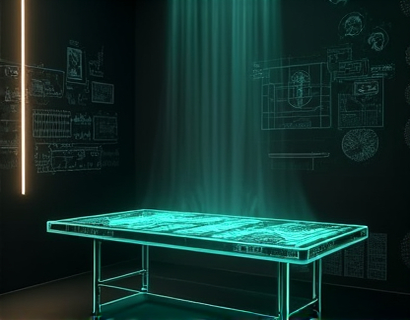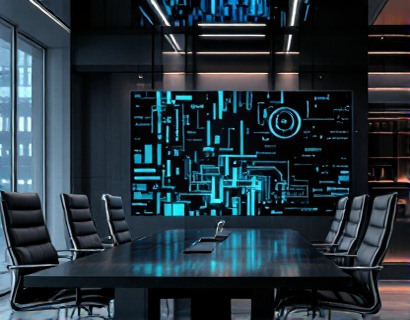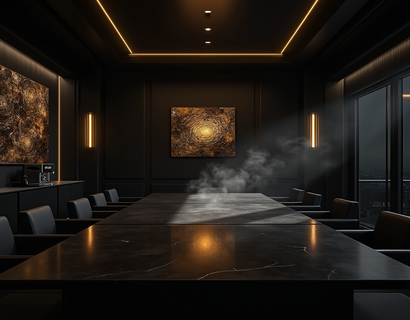Revolutionize Architecture Firm Management: Advanced Software Solutions for Enhanced Efficiency and Collaboration
In the dynamic and competitive world of architecture, managing a firm effectively is as crucial as creating stunning designs. The integration of advanced software solutions has emerged as a game-changer, transforming the way architecture firms operate. These tools streamline internal processes, enhance user experience, and facilitate seamless collaboration among team members, allowing architects to concentrate on their creative excellence. This article delves into the transformative impact of these software solutions on architecture firm management, highlighting how they optimize project management, resource allocation, and client interactions, ultimately leading to improved productivity and efficiency.
Streamlining Internal Processes
The backbone of any successful architecture firm is efficient internal management. Advanced software solutions are designed to automate and simplify various administrative tasks, reducing the time and effort required to manage day-to-day operations. Project management tools, for instance, provide a centralized platform where all project-related information is stored and accessible to the team. This includes project timelines, task assignments, milestones, and progress tracking. By centralizing this information, these tools eliminate the need for endless email threads and disorganized file management, ensuring that everyone is on the same page.
Another critical aspect is document management. Architecture firms deal with a vast array of documents, from initial sketches to final blueprints. Advanced software solutions offer robust document control systems that track versions, manage permissions, and ensure that the most up-to-date files are always accessible. This not only prevents confusion and errors but also enhances the overall quality of the work produced. Moreover, these systems often include secure cloud storage, allowing team members to access files from anywhere, which is particularly beneficial for remote collaboration.
Enhancing User Experience
The user experience within an architecture firm is paramount for maintaining high levels of productivity and job satisfaction. Advanced software solutions are designed with the end-user in mind, providing intuitive interfaces that are easy to navigate and use. This reduces the learning curve for new employees and minimizes frustration for seasoned professionals. Features such as customizable dashboards, quick access to frequently used tools, and streamlined workflows contribute to a more efficient and enjoyable work environment.
Additionally, these tools often include collaboration features that enhance communication among team members. Real-time commenting, @mentions, and integrated chat functionalities ensure that discussions remain contextual and relevant, reducing the need to switch between multiple platforms. This seamless integration of communication tools within the project management software helps to keep projects moving forward without delays caused by miscommunication or information silos.
Optimizing Project Management
Project management is a critical function in any architecture firm, and advanced software solutions offer powerful tools to optimize this process. One of the key features is advanced scheduling and timeline management. These tools allow project managers to create detailed Gantt charts and critical path analyses, ensuring that projects stay on track and deadlines are met. Automated reminders and notifications keep team members informed of upcoming milestones and deadlines, reducing the risk of missed deadlines and last-minute rushes.
Resource allocation is another area where these software solutions excel. By providing a comprehensive view of available resources, including personnel, equipment, and materials, project managers can make informed decisions about task assignments and resource utilization. This not only ensures that resources are used efficiently but also helps in identifying potential bottlenecks before they become critical issues. The ability to dynamically adjust resource allocation based on project needs and team availability further enhances the firm's ability to deliver projects on time and within budget.
Enhancing Client Interactions
Client satisfaction is a key driver of success in the architecture industry. Advanced software solutions play a vital role in improving client interactions by providing tools that facilitate better communication and transparency. Client portals, for example, offer a secure and user-friendly interface where clients can view project progress, upload feedback, and communicate directly with the design team. This level of access and engagement helps to build trust and ensures that clients feel involved throughout the project lifecycle.
Moreover, these platforms often include features for managing client expectations and managing change requests. By providing clear guidelines and approval workflows, firms can handle changes more efficiently, reducing the risk of scope creep and cost overruns. Real-time updates and notifications keep clients informed of any changes or updates, ensuring that they are always in the loop. This transparency not only enhances the client experience but also helps in maintaining long-term relationships and securing repeat business.
Improving Collaboration and Teamwork
Collaboration is at the heart of successful architecture projects, and advanced software solutions are designed to foster a collaborative environment. Cloud-based platforms enable team members to work together in real-time, regardless of their physical location. This is particularly beneficial for firms with multiple offices or remote workers, as it ensures that everyone has access to the same information and can contribute to projects simultaneously.
Version control is another critical aspect of collaboration. Advanced software solutions track changes and maintain a history of document versions, allowing team members to revert to previous states if necessary. This not only prevents data loss but also provides a clear audit trail, which is essential for compliance and quality assurance. Additionally, integrated commenting and annotation tools enable team members to provide feedback directly within the documents, streamlining the review and approval process.
Boosting Productivity and Efficiency
The cumulative effect of these advanced software solutions is a significant boost in productivity and efficiency across the entire firm. By automating routine tasks, providing centralized access to information, and facilitating seamless collaboration, these tools free up valuable time for architects and other team members to focus on their core responsibilities. This shift allows professionals to dedicate more time to creative and strategic work, leading to higher quality designs and innovative solutions.
Moreover, the data insights generated by these software solutions can be leveraged to make informed decisions and drive continuous improvement. Project performance metrics, resource utilization rates, and client satisfaction scores provide valuable insights that can be used to refine processes and enhance overall firm performance. This data-driven approach ensures that the firm is always moving forward and adapting to the evolving needs of the industry.
Conclusion
In conclusion, the integration of advanced software solutions in architecture firm management is not just a trend but a necessity for staying competitive and efficient in today's fast-paced business environment. These tools streamline internal processes, enhance user experience, optimize project management, and improve client interactions, all of which contribute to increased productivity and collaboration. By embracing these technologies, architecture firms can empower their teams to focus on creative excellence while ensuring that the business side of operations runs smoothly and effectively.










































